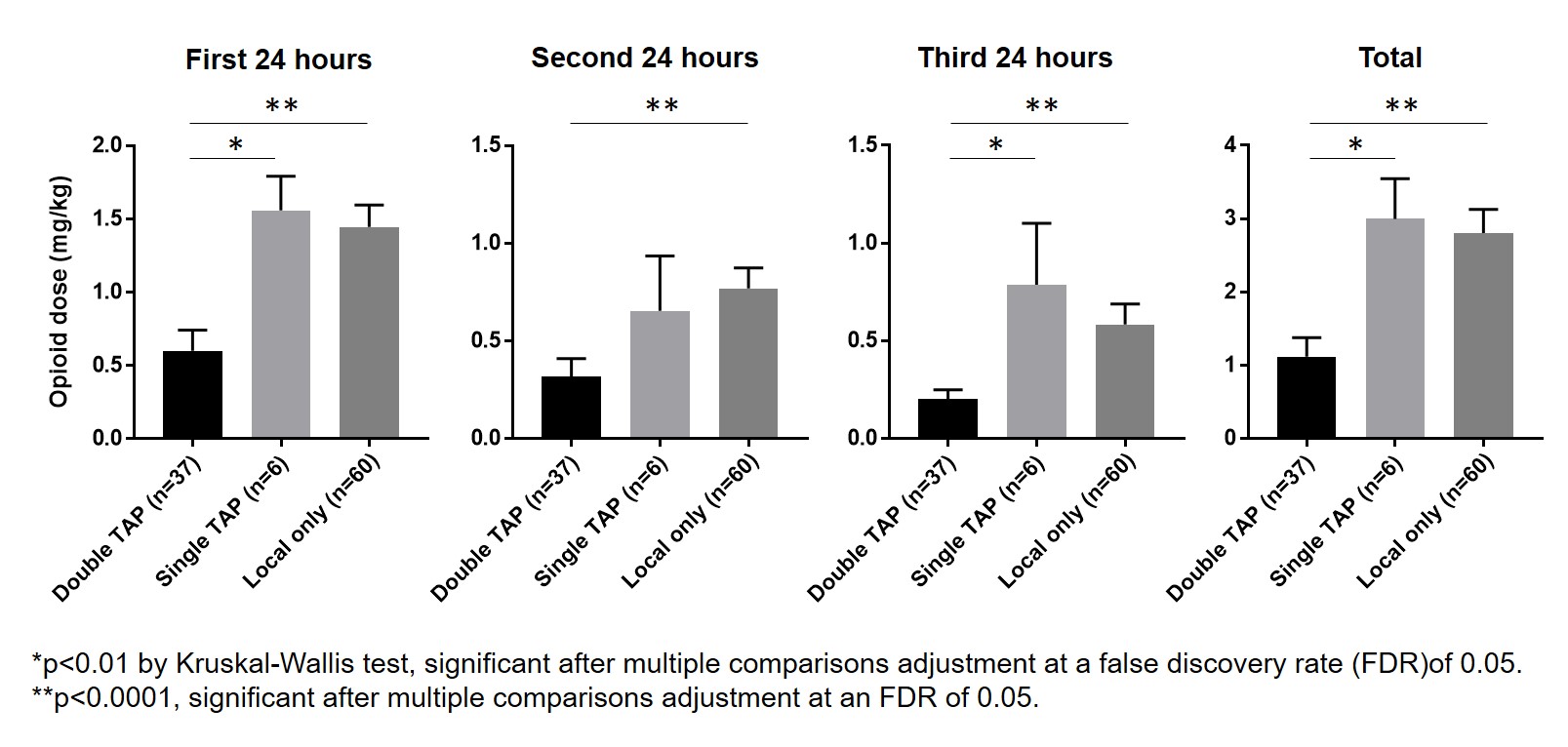Back to 2017 Program
Transversus Abdominis Plane (TAP) Catheters versus Intraoperative Regional Field Infiltration in Reducing Postoperative Opioid Requirements in Children Undergoing Renal Transplantation: A Retrospective Age-Matched Comparison
Kevin Shee, BS1, Frank J. Penna, MD2, Lael Reinstatler, MD, MPH2, Hissan Butt, BS3, Martin A. Koyle, MD3, Jason Hayes, MD3, Armando J. Lorenzo, MD3.
1Geisel School of Medicine at Dartmouth, Lebanon, NH, USA, 2Dartmouth-Hitchcock Medical Center, Lebanon, NH, USA, 3The Hospital for Sick Children, Toronto, ON, Canada.
Purpose: After renal transplantation, children often exhibit large opioid requirements, which leads to significant side effects and complications. To address this problem, we introduced the use of transversus abdominis plane (TAP) catheters with continuous postoperative local anesthetic (bupicavaine) infusion, placed under direct vision at the time of RT. Herein, we present a retrospective study of the effectiveness of this novel approach as part of a multi-modal pain management strategy.
Methods: The intra-operative procedure involved ipsilateral deployment of 3-hole epidural catheters between the internal oblique and transversus abdominis muscles, at one or two different locations along the Gibson incision, following the direction of the nerves. Postoperative opioid utilization (mg/kg) for the first 24 hours (Day 1), second 24 hours (Day 2), third 24 hours (Day 3), and total dose was obtained from 103 pediatric renal transplant recipients. Postoperative opioid use was compared between children who underwent renal transplantation managed with two TAP catheters at two locations with local anesthetic infusion (Double TAP; n=37), one TAP catheter at one location with local anesthetic infusion (Single TAP; n=6), or local anesthetic infusion only (Control; n=60).
Results: The Double TAP group demonstrated significantly decreased postoperative opioid use compared to the Control group for Day 1, Day 2, Day 3, and total dose (p<0.0001) (Figure 1). The Double TAP group also demonstrated significantly decreased use compared to the Single TAP arm for Day 1, Day 3, and total dose (p<0.01). No significant differences were found between the Single TAP and Control groups (p>0.05). No major adverse events were reported. Minor adverse events included 2 cases of catheter leaks and 1 case of right thigh numbness in the Double TAP group, and 1 case of post-op opiate-related apnea in the Control group.
Conclusion: Our data demonstrates that the novel use of dual ipsilateral TAP catheters with local anesthetic infusion significantly lowers mean opioid utilization after pediatric RT when compared to single TAP catheters with local anesthetic and local anesthetic only controls. These results suggest that double TAP catheter placement with local infusion is a superior anesthesia technique for pediatric RT that should be validated in larger randomized trials.

Back to 2017 Program
|
|
|
|




